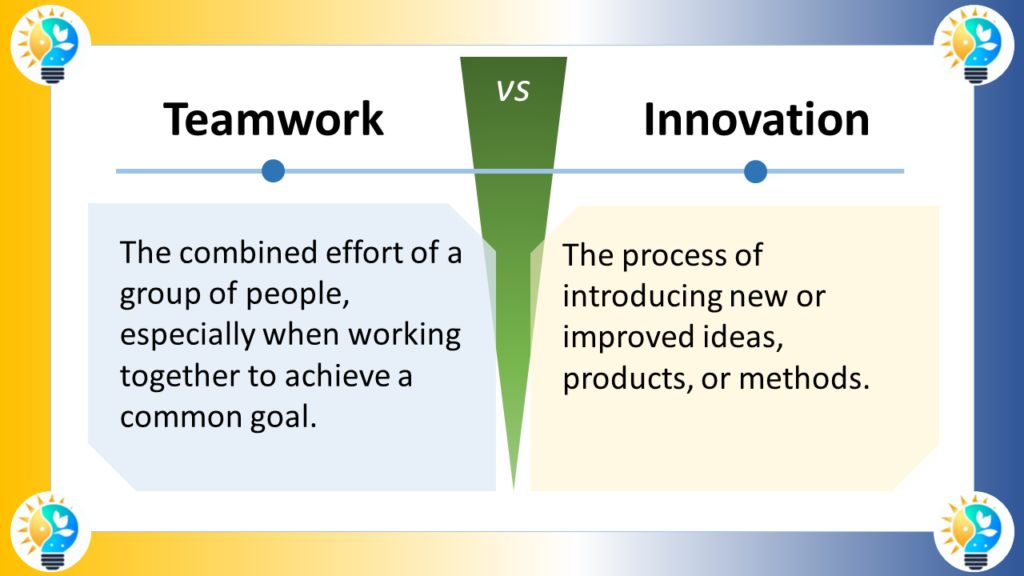While both terms are indicative of advancement and progress in the technology sector, Innovative Technology and State-of-the-Art Innovations carry distinct connotations within the industry.
Definition
Defining Innovative Technology
Innovative Technology points to a development or improvement that introduces new methods, ideas, or products. It’s not just about being new; it’s about being better in a way that can be meaningful and impactful.
Characteristics of Innovative Technology
- Novelty: Introduces new concepts or applications.
- Enhancement: Offers improvements over previous technologies.
- Variability: Can range from minor tweaks to major overhauls.
Defining State-of-the-Art Innovations
State-of-the-Art Innovations are not only new and improved but also represent the apex of current technological achievements. They are the exemplars in their field, incorporating the latest and most sophisticated advancements.
Characteristics of State-of-the-Art Innovations
- Peak Performance: Reflects the highest level of performance and sophistication.
- Industry Leading: Sets the benchmark for technology within a specific domain.
- Contemporary: Embodies the most recent and advanced developments.
Exploring a Variety of Synonyms for Innovative Technology
- Advanced Technology
- Cutting-Edge Innovations
- Cutting-Edge Breakthroughs
- Disruptive Tech
- Emerging Technologies
- Forward-Looking Tech
- Futuristic Innovations
- Groundbreaking Developments
- High-Tech Breakthroughs
- Innovative Breakthroughs
- Inventive Solutions
- Leading-Edge Advancements
- Modern Technological Breakthroughs
- Progressive Advancements
- Next-Generation Technology
- Novel Tech
- Revolutionary Tech
- State-of-the-Art Solutions
- State-of-the-Art Innovations
- Trailblazing Innovations
- Visionary Tech

Innovation is considered as a driving force in progress.
It includes the introduction of novel ideas, methods, or products that bring positive change and advancement.
For more information about innovations, check our glossary
Innovative Technology vs. State-of-the-Art Innovations: Relationship and Relevance
Innovative Technology can be seen as the driving force behind State-of-the-Art Innovations. While innovative tech often represents a significant step forward, state-of-the-art innovations are the pinnacle of these efforts, showcasing the best available capabilities at that moment.
Contextual Use of the Terms
A company might develop Innovative Technology to solve a problem or improve a process in a way that hasn’t been done before. However, when a company adopts State-of-the-Art Innovations, it is leveraging the absolute latest and most effective technology to ensure peak efficiency, capability, and competitiveness.
Examples of Utilization
The development of wireless charging technology for electronic devices is an example of Innovative Technology, as it introduced a new way to power devices without the need for cables.
Conversely, the latest generation of 5G wireless technology can be described as a State-of-the-Art Innovation, given its status as the most advanced and fastest wireless communication standard at its time of release.
Innovative technology and state-of-the-art innovations are related concepts but have distinct differences. Let’s explore each term and understand their characteristics and implications.
- Innovative Technology:
Innovative technology refers to the development and implementation of new or significantly improved technologies. It involves the creation of novel solutions, products, or processes that introduce advancements and improvements over existing technologies. Innovative technology often involves the application of cutting-edge research, creative thinking, and problem-solving to address specific challenges or meet evolving needs.
Examples of Innovative Technology:
- Artificial intelligence (AI) algorithms that can learn and adapt [1].
- Advanced robotics systems capable of performing complex tasks autonomously [1].
- Next-generation renewable energy technologies, such as advanced solar panels or wind turbines [1].
- Breakthrough medical devices or treatments that improve patient outcomes [1].
- State-of-the-Art Innovations:
State-of-the-art innovations refer to the most advanced and current developments in a particular field or industry. These innovations represent the pinnacle of technological progress and are considered the best available at a given time. State-of-the-art innovations are characterized by their superior performance, efficiency, and effectiveness compared to previous technologies or solutions.
Examples of State-of-the-Art Innovations:
- The latest generation of smartphones with advanced features and capabilities [2].
- High-speed trains that utilize the most advanced engineering and materials [2].
- Cutting-edge medical equipment, such as MRI machines, that provide highly detailed imaging [2].
- Advanced military technologies, including stealth aircraft and unmanned drones [2].
Differences between Innovative Technology and State-of-the-Art Innovations:
- Scope: Innovative technology encompasses a broader range of new or improved technologies, while state-of-the-art innovations specifically refer to the most advanced developments in a particular field or industry.
- Timing: Innovative technology can be introduced at any time, while state-of-the-art innovations represent the current best available technologies.
- Comparison: Innovative technology is evaluated based on its novelty and improvement over existing technologies, while state-of-the-art innovations are evaluated based on their superiority and performance compared to previous technologies.
FAQ
Q: Does state-of-the-art imply innovation?
A: Yes, State-of-the-Art Innovations inherently include innovative aspects since they represent the highest development point reached through innovation.
Q: Is innovative technology always less advanced than state-of-the-art?
A: Not necessarily. Innovative Technology can be cutting-edge; it just doesn’t have to represent the peak performance level yet to qualify as innovative.
Q: How do state-of-the-art innovations impact industry standards?
A: State-of-the-Art Innovations often set new industry standards, pushing competitors to reach the same level of technological sophistication.
Q: Can a company’s product be innovative without being state-of-the-art?
A: Absolutely. A product can introduce innovative features or methods without needing to be at the highest level of technological advancement.
Q: How quickly do state-of-the-art innovations change?
A: The pace at which State-of-the-Art Innovations evolve can vary greatly depending on the industry and rate of technological advancement, but they typically change as soon as new breakthroughs are achieved and widely recognized.


